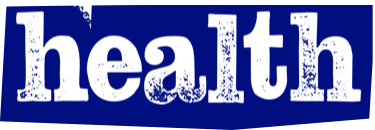
A “case of the Mondays” doesn’t necessarily have to be a bad thing. Research conducted by Johns Hopkins found that people are more likely to use Mondays as the day to start fresh and kick off health goals, such as eating plans or exercise regimes. And based on that research, The Monday Campaigns was founded. The non-profit public health initiative is associated with Johns Hopkins and both Columbia and Syracuse Universities. You may know their first campaign—Meatless Monday—but they’ve started a number of other programs.
We’ve partnered with The Monday Campaigns to bring Grok Nation readers new info each month to have healthier Mondays. Read the past Monday posts here.
February is American Heart Month, which serves as an important reminder to all to give our hearts a lot of loving—no matter your age or gender. According to an article by the American Heart Association, heart attacks are becoming more common in younger people, especially women.
Despite this alarming finding, there’s encouraging news. Heart disease can often be prevented when people make better lifestyle choices and manage their health conditions. We asked nutrition consultant Bonnie Taub-Dix for her advice on how women can keep our hearts healthy. A Meatless Monday advocate, Bonnie is also the author of Read It Before You Eat It—Taking You from Label to Table. Here, she explains what foods to avoid for heart health and even shares a heart-healthy Meatless Monday recipe.
THE MONDAY CAMPAIGNS: Besides putting on a red dress for American Heart Month, what are specific easy-to-follow steps women can do to keep their hearts safe and strong?
BONNIE TAUB-DIX: What you wear on the outside never matters as much as what’s going in inside!
For too many years, I’ve seen women in my practice overcome with worry and concern over the health of their husband or father or child. They know every little detail about their medical histories, laboratory values, and current medications. Yet when it comes to themselves … their chief complaint is, “I hate the way I look.” It’s not until I scratch below the surface or consult with their physicians that I discover they have a soaring cholesterol level, or a family history of diabetes, or that they’re going through menopause and have a mother and grandmother suffering from heart disease or osteoporosis.
These women don’t realize that they too can stand among their sisters, who together make up one scary statistic underscoring that a greater number of women die of heart disease than of all types of cancer combined. Moreover, millions of women are currently living with some form of cardiovascular disease, and they don’t even know it.
Are there particular foods to avoid to keep one’s heart healthy? What about processed foods?
Many people say they try to avoid “processed food,” as if it’s a kind of poison. It’s a well-intentioned goal, but certain processed foods make our lives more convenient, safer—and in many ways, even more nutritious.
So that means many highly nutritious frozen vegetables, sliced whole grain bread, canned beans, nut butters, and even milk and yogurt are all technically processed foods. We don’t eat stalks of wheat, we eat bread, and wheat must be processed to create bread. Even pre-chopped fruit or vegetables are processed.
In fact I wrote my book, Read It Before You Eat It- Taking You from Label to Table, to clear up the confusion about how to shop for the healthiest foods in the supermarket. You’ve probably heard health experts saying to “shop the perimeter” of a grocery store. That’s because the center of the store is where most of the highly processed foods reside. However, some of the healthiest foods can also be found in the center of your supermarket, so it’s important to learn how to make the most of the middle, and know good processed foods from bad.
The good news is certain processed foods are healthier than some foods found in their natural state, such as:
- Plain yogurt with added cultures, for example, retains the protein and calcium naturally found in dairy products, and it also includes added good bacteria to help boost our gut function and immune systems.
- Canned tomatoes contain more lycopene, a powerful antioxidant that reduces inflammation, than fresh tomatoes do, especially when they are eaten simultaneously with a small amount of oil to enhance its absorption.
Without these foods, it could be more difficult—and a lot more expensive—to feed a family a nutritious diet. Don’t judge a food by the front of the package. Flip that bag or box over to see what’s really inside.
Should people with a family history of heart disease be much more careful than those who don’t? What can someone with a family history do for help preventing heart disease?
If you knew you could have stopped that balsamic vinegar from splattering on your favorite white sweater, would you have done something to prevent it from happening? And if you knew you were going to drive into a pothole, causing your tire to go flat, would you have taken a different route? Yes, all of the above situations could have been prevented if you would have anticipated these problems in the first place, but unless you’re clairvoyant, it’s not very easy to prevent something you can’t predict. When it comes to your body, could be medical problems, like accidents, are inside you waiting to happen. Whether it’s potential damage from high blood sugar, blood pressure, or cholesterol levels, this is the time to take charge of your health. You can fight against your family histories, by not putting out a welcome mat to health issues by taking a closer look at what you put on your plate and by trying to move your body and find peace of mind.
Meatless Monday encourages people to cut out meat one day a week for their health and try the great variety of plant-based foods. Are there specific plant-based foods that are most beneficial for our heart health?
Oatmeal has been a staple in our home as a steamy bowl of goodness for breakfast swirled with almond butter and bananas or as a savory side mixed with a variety of seasonings and spices. Oats and almonds are rich in fiber to help lower cholesterol levels.
Beans, the most underrated superfoods, are also rich in soluble fiber to help keep you feeling fuller for longer while controlling cholesterol levels. They also are a great source of plant-based protein.
Plant-based protein is a hot trendy topic these days, but these foods have been around for centuries providing fiber and an array of nutrients that we don’t get enough of. Plant proteins like beans, nuts, and seeds are just a few examples of how we can cut back on meat while boosting the value of our diets.
What’s your go-to food for your and your family’s heart health on Meatless Monday?
Oh—don’t make me choose one!! But if I have to…I’d have to say my Spicy Dark Chocolate Chili Bowl. What I love about this recipe is that you don’t really have to follow it exactly: You can use your favorite ingredients. I’m a recipe rebel, so I’m always improvising and swapping ingredients. This recipe contains heart healthy beans and avocado as well as a variety of anti-inflammatory spices.

Spicy Dark Chocolate Chili Bowl
Servings: 6 to 8
Preparation Time: 20 minutes
Cooking Time: 40 minutes
Ingredients:
1 medium onion, chopped
5 cloves garlic, minced
2 tablespoons olive oil
1 teaspoon cumin
1 teaspoon turmeric
1 teaspoon chili powder
1/8 teaspoon cinnamon
1/4 teaspoon red pepper flakes
1/4 cup dark chocolate chips
1 can (28 ounces) crushed tomatoes
2 cans (16 ounces) Kidney Beans in Spicy Chili Sauce
2 tablespoons cheddar cheese, shredded
1/2 cup corn kernels, cooked
1/2 each red, yellow and orange bell peppers, chopped
1/2 avocado, chopped
1/2 cup crushed multigrain tortilla chips
To taste salt and pepper
Instructions:
- In a large frying pan, cook onion and garlic in oil for approximately 5 minutes.
- Add cumin, turmeric, chili powder, cinnamon and pepper flakes.
- Add tomatoes, beans, chocolate chips. Stir together well.
- Simmer for approximately 15 minutes.
- Place chili in bowl, and sprinkle one row each of cheese, corn kernels, peppers, avocado and tortilla chips on top of chili.
Note: Serving suggestions — place chili over brown or wild rice and then add toppings. Sauté bell peppers, if preferred.
Find more recipes and insights, visit Bonnie’s website or follow her on Instagram.


Grok Nation Comment Policy
We welcome thoughtful, grokky comments—keep your negativity and spam to yourself. Please read our Comment Policy before commenting.